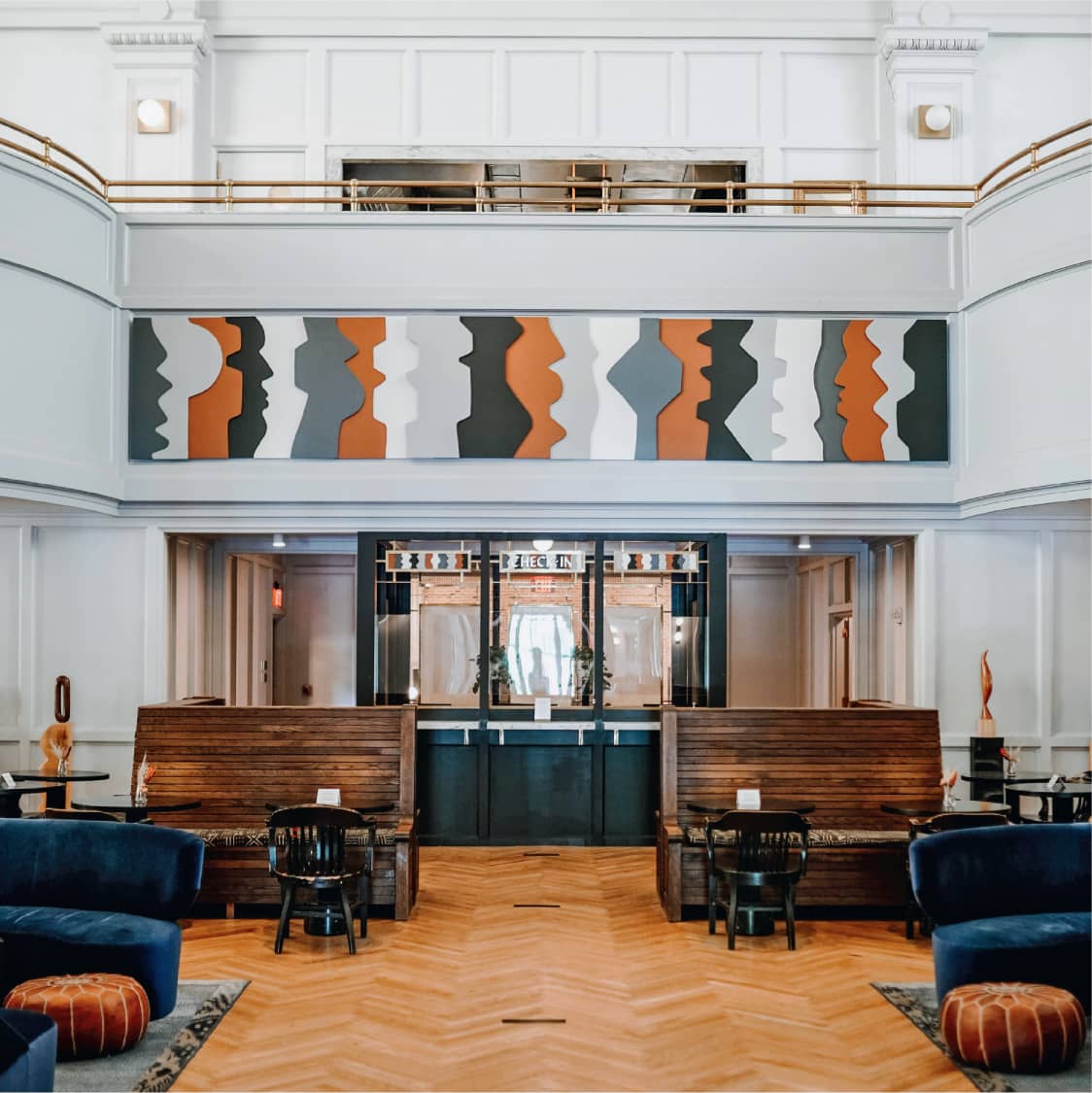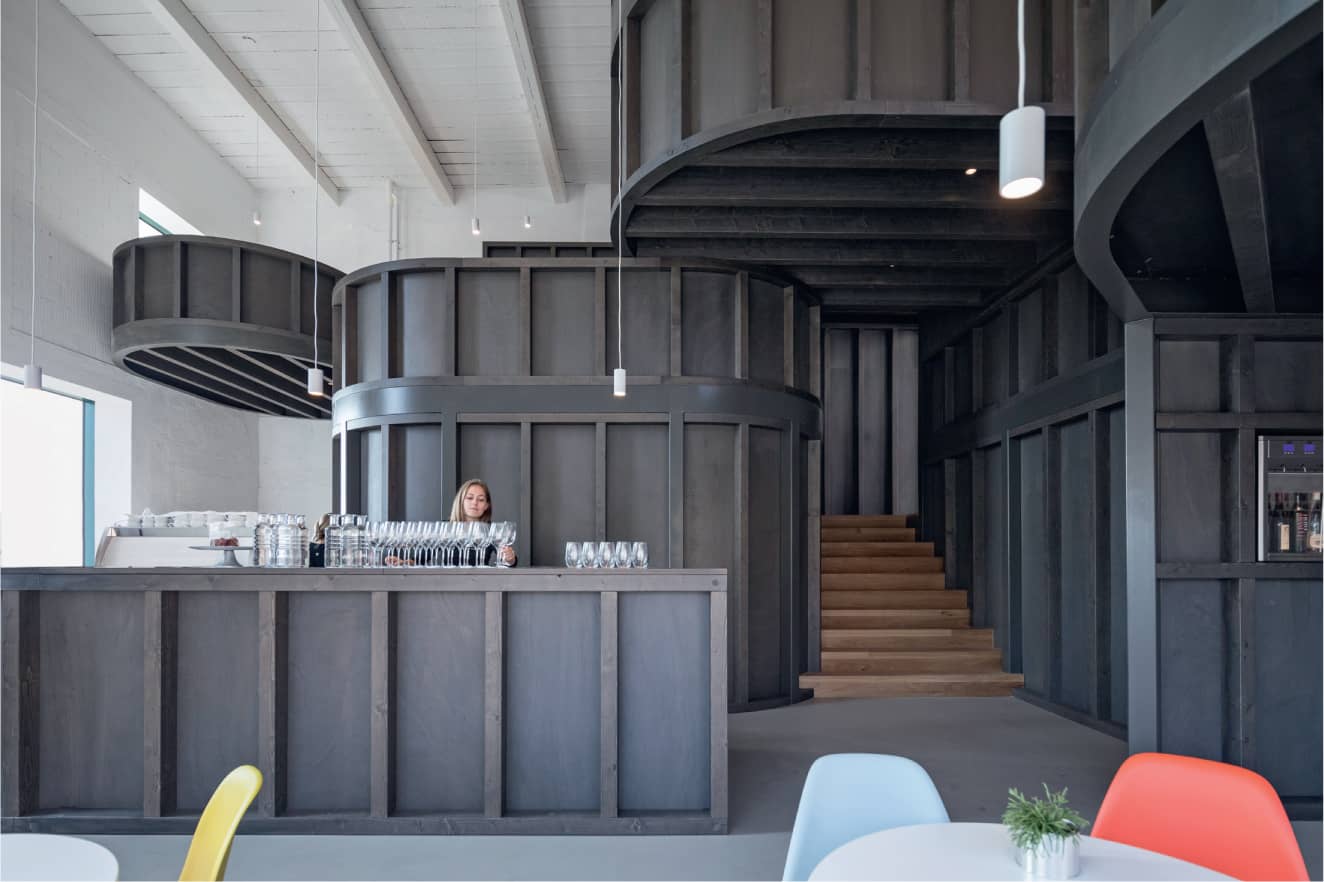09 Balance
The aesthetically pleasing arrangement of elements within a space.
Helpful Advice
It’s important to not only design placement of furniture and elements in plan, but to also consider the height and visual weight of these elements in elevation or in three dimensions to understand the full impact of those objects placed in a space. Similarly, be careful not to underestimate the visual weight of patterning or color in accessories, plants, pillows, and decorative items, which may not always be included in initial design drawings.
Visual balance is based on equal distribution of elements, and is an important principle and goal for interior designers. Most spaces require visual balance, which can be achieved by distributing the visual weight of objects/elements within a space to achieve a feeling of equilibrium. There are three types of balance in interior design symmetrical, asymmetrical, and radial.
Symmetrical Balance
Also referred to as “formal balance,” symmetrical balance is most pleasing to the eye. By dividing a room into equal sides or halves, or along a central axis, symmetry can be achieved by placing matching elements on both sides of the room to mirror each other. One example is placing a pair of sofas across a table from each other with matching side tables and lamps. This type of balance is commonly practiced in traditional spaces, easy to achieve in square rooms, and can have a calming effect, but often comes across as bland, static, or monotonous. Symmetrical balance can also be influenced by the use of color or pattern, millwork, smaller fixtures, and decor.

Meticulous design details and colorful frieze frame the reception area at the Line Hotel DC in Washington, D.C. by INC Architecture + Design.
Asymmetrical Balance
Asymmetrical balance is often practiced in modern or contemporary interiors, and balances the visual weight of objects, lines, colors, and textures without exact duplication from one side of the room to the other side. Rather than repeating elements on each side of a central axis, it balances a variety of elements working together (such as balancing a sofa with two lounge chairs on either side of an axis). Various objects can be added to a room to achieve asymmetrical balance. Sometimes an odd number of objects is purposefully placed in order to achieve asymmetry in the space. This type of balance may be visually more complex and interesting, but also more difficult to achieve because it is not as ordered as symmetrical balance, proportional objects, or furniture.

The House of Wine in Znojmo, Czech Republic, designed by Chybik + Kristof, arranges curved volumes clad in dark plywood that divide the interior into several smaller seating areas.
Radial Balance
In radial balance, objects are arranged radially in a circular manner around a central focal point. Less commonly used, radial balance works with the presence of curved structures, like staircases, circular dining tables, or large, round light fixtures. Repetitions of curves, colors, and patterns are common in radial balance. Positioning a round table with a circular light fixture above and with chairs equally arranged around the table is one way to achieve radial balance.
As an unbalanced space can be uncomfortable, an interior designer’s goal is to create a feeling of balance and aesthetic equilibrium for the user(s). Any combination of these types of balance are possible within a home, office, or other spaces.

In radial balance, the distributed arrangement of items radiates around a central point, extending outward or inward. In this case a lectern at the European parliament hemicycle in Strasbourg, France is the focal point.
